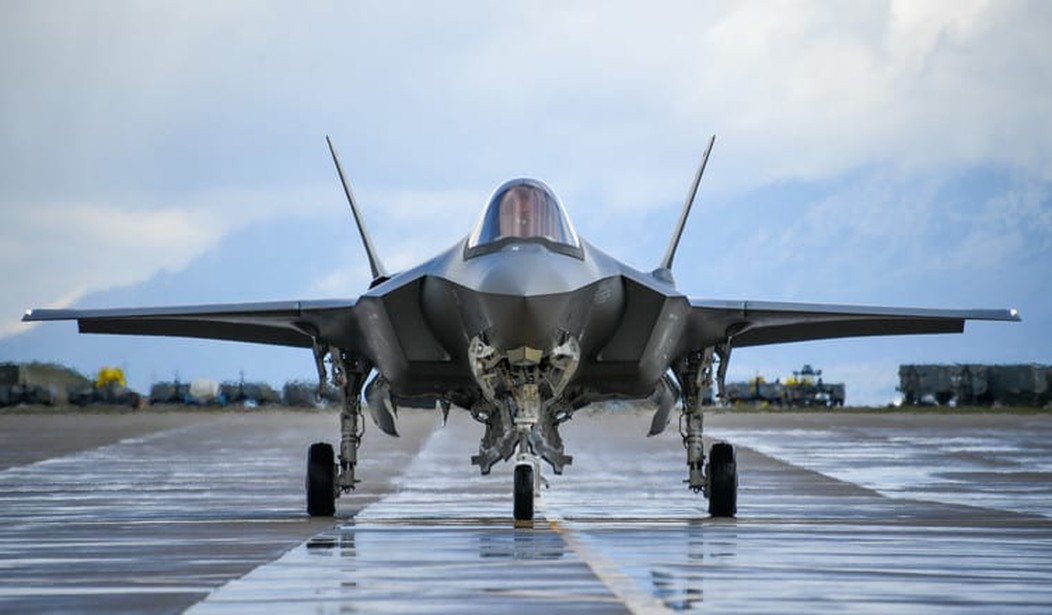Let’s start talking about the post-coronavirus world, shall we? Because, God willing, the time is coming. We’ve covered every way possible to understand how to wash our hands. We all know where to get the latest info. We’re set in the education area. It is healthy and important to start looking beyond, lest we lose ourselves in a navel-gazing fog.
I want to start by talking about jets and money. We need more jets for less money. And if we can figure out coronavirus (we are, we will), we can sure figure this one out. We can start now, actually, by deep-sixing the obscene pork-barrel bad dream that is the F-35 Joint Strike Fighter program. At a minimum, slice it way back.
I’ve written about this before. In better times, the F-35 program was already the most expensive in procurement history, riddled with flaws and overruns, looking just plain untenable in every way.
Well now it is undeniably untenable. We can’t afford to play this game in this troubling new day, and it’s time to cut bait. We were already deep in debt, of course, at the end of 2019. There is no denying that deficits this year due to the imperative spending necessities of the unplanned, economically crippling virus situation will be “mind-boggling. I never contemplated this,” says Douglas Holtz-Eakin, president of the American Action Forum, who headed the Congressional Budget Office under President George W. Bush. “I can remember the quaint days when I was being yelled at because we had a $400 billion deficit and I was the CBO director. It doesn’t look so bad right now.”
We will simply not be able to treat what money we will have to work with in the post-coronavirus world the way we used to. So maybe pull out your pig book and get smarter on the spending thing whilst stuck home. It’s gonna take a battle royale to save ourselves from those who will attempt a return to business as usual in the spending department.
Defense spending has soared and that is necessary and not a bad thing, but that spending–now more than ever–must be smarter and not squandered on padded contracting projects producing overpriced military aircraft that don’t even work right. That is what we have had in the F-35 boondoggle.
The program is the most expensive in U.S. history. It costs almost 80% more than the aircraft it was scheduled to replace or $8.8 billion according to a government study. Popular Mechanics last year pointed out “a report added that the F-35A’s cost per flying hour is $32,500 while the F-16C/D is $25,500. Private analysts have called the F-35 a ‘money pit,’ and argued that the purpose of Lockheed’s extensive national and global supplier base—which includes 1,300 suppliers in 45 states and nine foreign countries—was not so much to realize logistics efficiency and security, but to make sure the Joint Strike Fighter was too big to fail.”
Clearly, this program was designed by contractors to be a highly profitable “money pit” for the taxpayer that was created as a “too big to fail program.” Tale as old as Washington time. The sheer magnitude of this program is just staggering. The fact that our economic health has taken this dramatic and unforeseen turn for the awful only highlights the madness and unsustainability of it all.
The New York Times estimated that the F-35 drama will cost us over $1 trillion over the next 60 years. Perspective: Congress has been fighting over using half of that sum to set up a fund designed to prevent all of the small businesses in the U.S. from failing in the midst of our current crisis. Congress is scrambling to find money to dole out checks, yet we have one program for one type of fighter jet aircraft that costs half as much as emergency legislation to save the economy.
So continue to defend the F-35 program. Go ahead. Anyone?
I can’t end this without mentioning yet another strike against this aircraft. It has barely even been used and nothing seems to work as advertised in the planes. Bloomberg reported last month that the system they set up for repairs to the aircraft does not work. They reported “a $17 billion Lockheed Martin Corp. system used since 2009 to monitor F-35 fighter jets for repairs, parts replacement and general maintenance is rife with flaws, sometimes forcing personnel to spend hours entering data by hand, according to congressional auditors.” The program is such a mess it took 18 years to get the planes operational.
No one sees this adult leaving Mom’s basement anytime soon, if ever. But Mom needs the space now and it’s important.
The F-35 blows. Not merely because it costs a trillion dollars and does not work, but also because we need that money desperately now to save lives and to backstop a meltdown of the whole economy. Cut the cord, cut up the card.
Christian Josi is a veteran communications advisor and political operative, a proven non-profit management expert, and a frequent opinion columnist for a variety of publications on a variety of subjects. He is the Founder and Managing Director of C. Josi & Company, a global public affairs resource organization based in Virginia Beach and Washington.










Join the conversation as a VIP Member